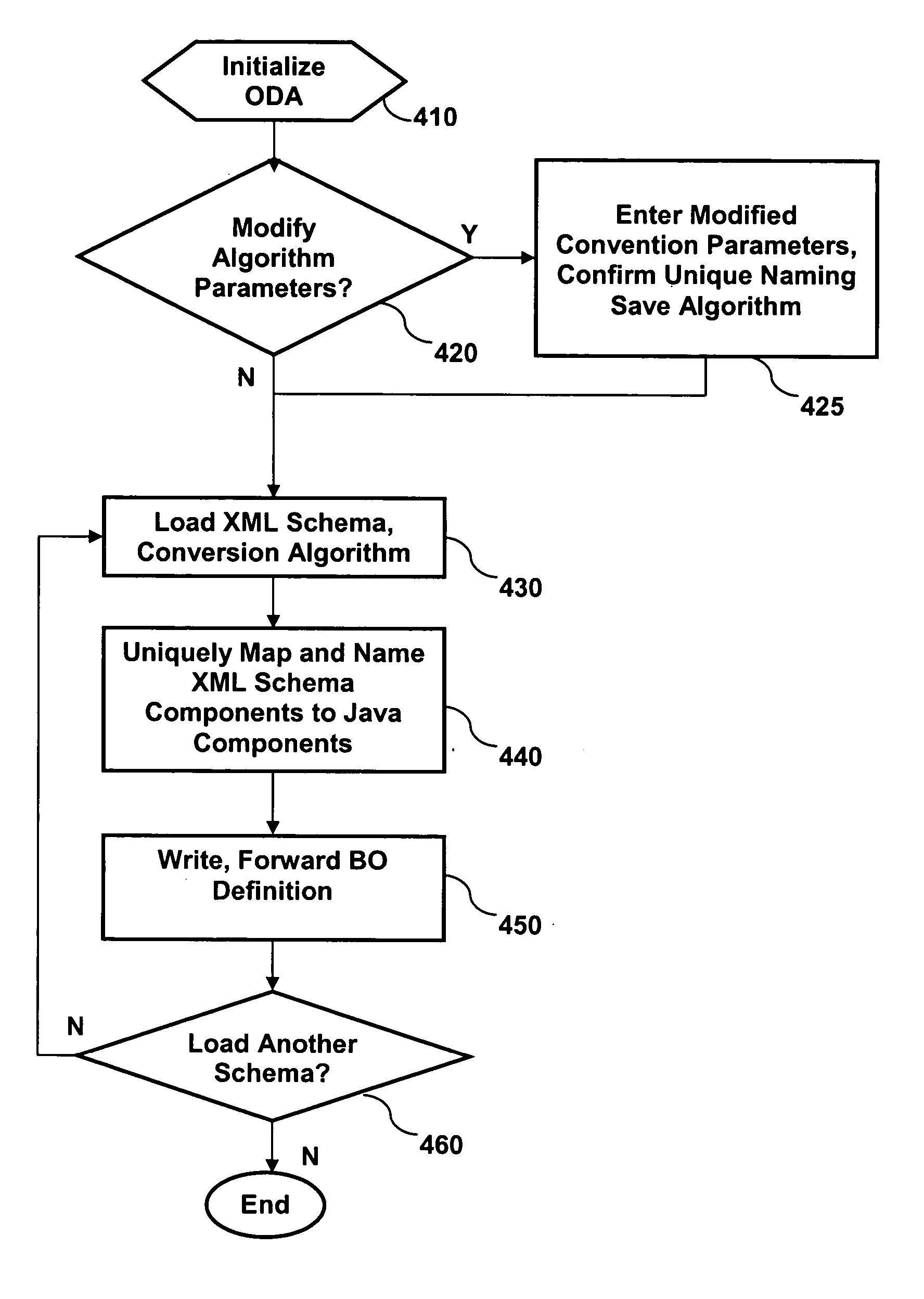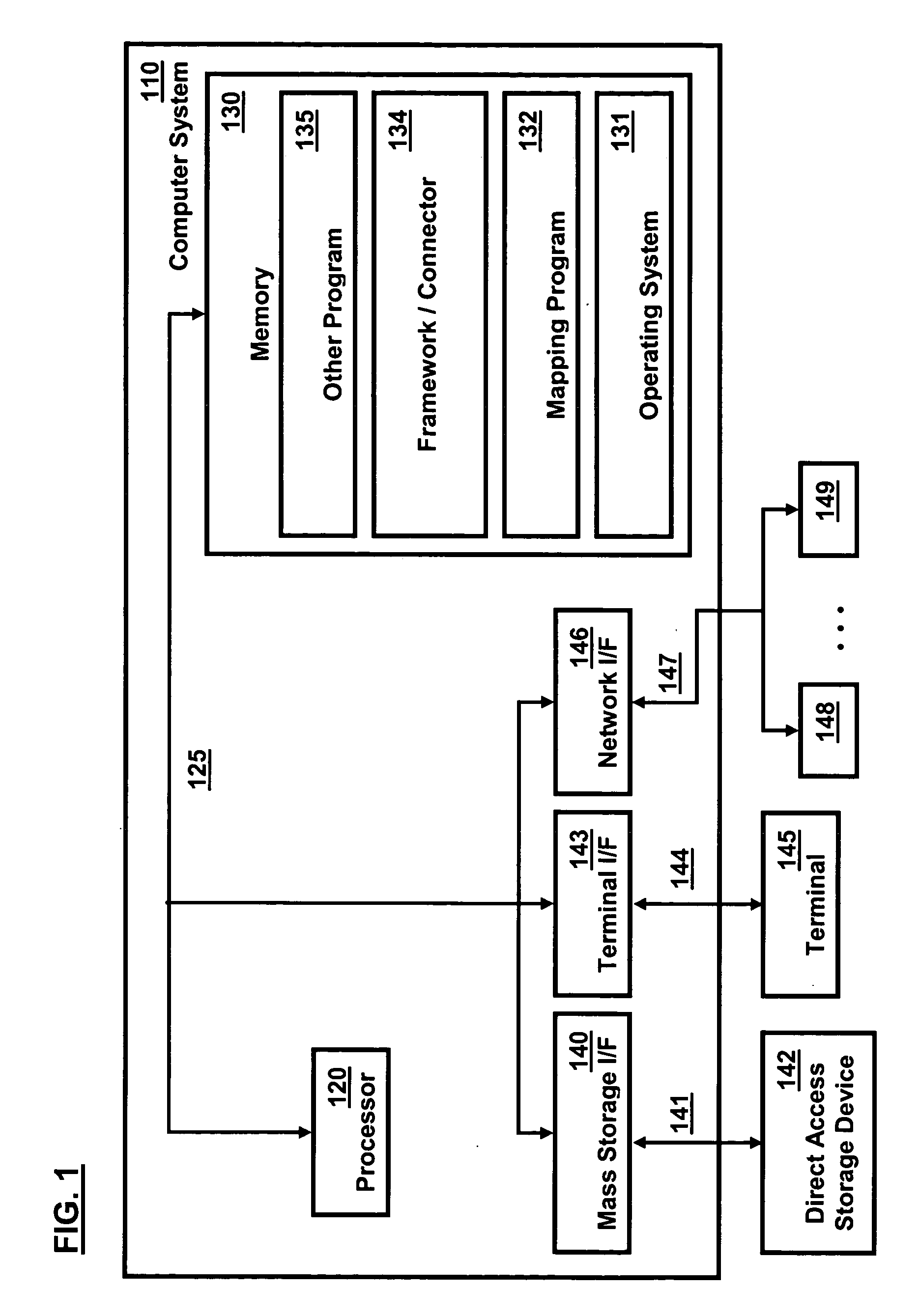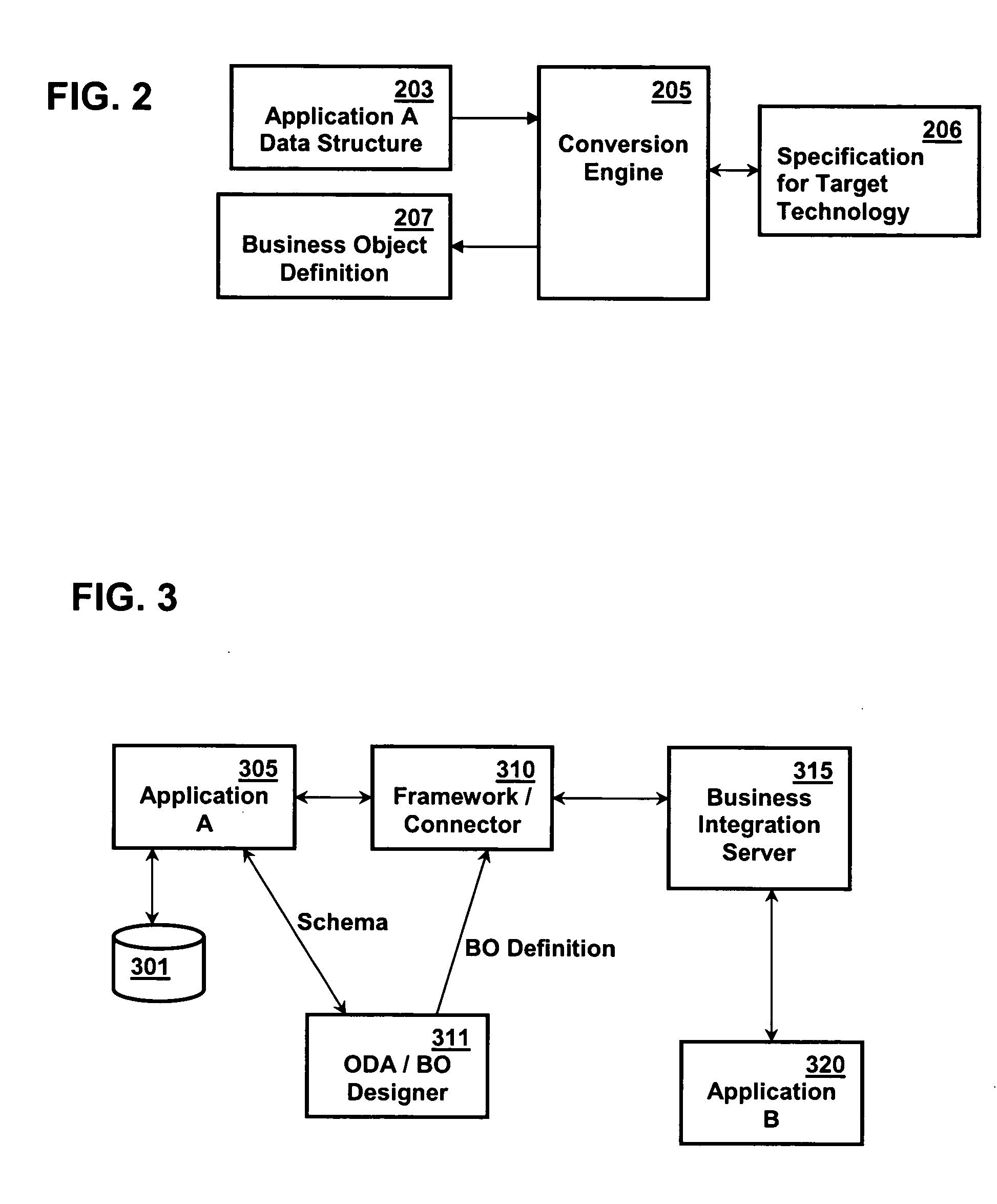Mapping XML schema components to qualified Java components
- Summary
- Abstract
- Description
- Claims
- Application Information
AI Technical Summary
Problems solved by technology
Method used
Image
Examples
Embodiment Construction
[0018] In a preferred embodiment of the invention, a conversion engine is provided that includes an algorithm for operating on one or more sets of XML schemas to generate proprietary data definitions that uniquely model the XML schemas. In addition to the sense given by the XML Schema recommendations of the W3C Consortium to “unique,” by “unique mapping” we mean that (a) each XML schema element or type is mapped to a component of the conversion language (i.e., object language into which XML documents will be converted based on the mapping definition), and (b) each XML schema element or type is uniquely identified within the set of all unique (preferably legal) XML schema. By “unique naming,” we mean that unique XML schema element or type (a) generate unique component names in the conversion language (e.g., Java) that substantially (preferably fully) adhere to the conversion language naming standards, and (b) generate the same unique name across multiple schema conversions. The resul...
PUM
 Login to View More
Login to View More Abstract
Description
Claims
Application Information
 Login to View More
Login to View More - R&D
- Intellectual Property
- Life Sciences
- Materials
- Tech Scout
- Unparalleled Data Quality
- Higher Quality Content
- 60% Fewer Hallucinations
Browse by: Latest US Patents, China's latest patents, Technical Efficacy Thesaurus, Application Domain, Technology Topic, Popular Technical Reports.
© 2025 PatSnap. All rights reserved.Legal|Privacy policy|Modern Slavery Act Transparency Statement|Sitemap|About US| Contact US: help@patsnap.com



